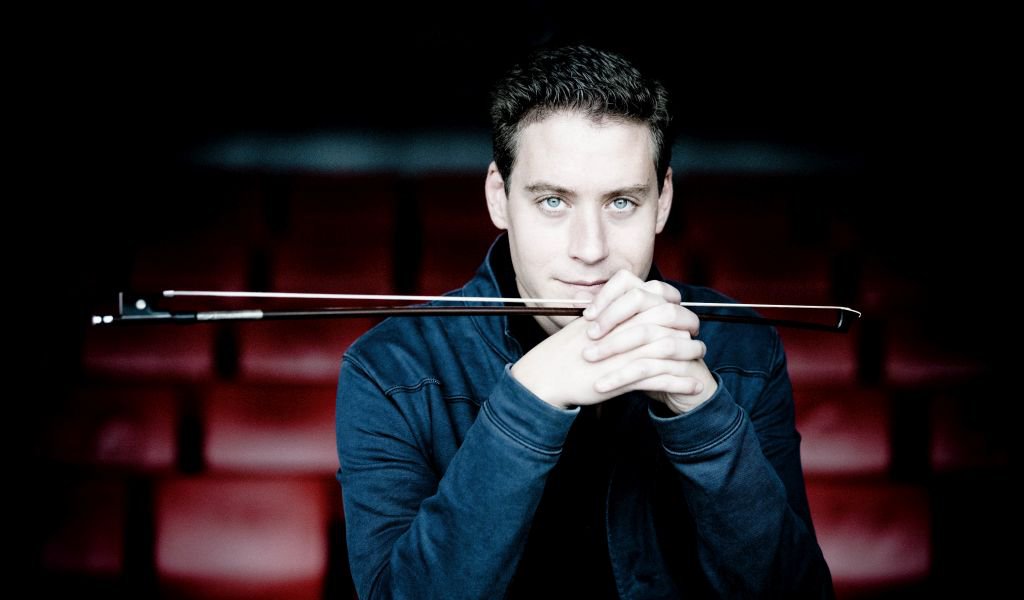
Program
Erich Wolfgang Korngold:
Violin Concerto in D major, Op. 35
INTERVAL
Dmitri Shostakovichbio:
Symphony No. 8 in C minor (“Stalingrad”), Op. 65
Featuring
Other information
Season tickets
- REINER A
The event is about 2.5 hours long.
About the event
Though the two composers who both doubled as movie score composers, Korngold and Shostakovich, experienced World War II under completely different circumstances, the historical context was crucial for both works on today’s program. The immigrant Korngold’s “Hollywood Concerto” was his first attempt to return from popular culture after the cataclysm, while Shostakovich’s symphony is an ironic homage to the Soviet system. The solo will be played by one of the world’s most sought-after violinists, Kristóf Baráti, whose performance of Korngold’s work was described by Bachtrack as being “all softness and grace, though again with an intense brightness in the string sound”. The BFO will be led by its returning guest, a master of “powerful bursts of energy, brilliant crescendos and beautiful executed transitions”, the Finnish Jukka-Pekka Saraste.
“In spite of the demand for virtuosity in the finale, the work with its many melodic and lyric episodes was contemplated more for a Caruso than for a Paganini. It is needless to say how delighted I am to have my concerto performed by Caruso and Paganini in one person: Jascha Heifetz”, wrote Korngold about the premiere of his violin concerto. It was a resounding success, providing Korngold with important feedback, since, until Hitler’s fall, he had only composed movie scores in the USA, and this was his first work for the concert hall he allowed to go public. Though three movements of the concerto include themes from his previous movie scores, the middle section of the second movement, Romanze, introduced by a lovely clarinet solo, is based on an original melody. The concerto, featuring a sizeable percussion section, is concluded by a series of variations on a crisp dance tune.
In 1943, after the war turned, Shostakovich moved to Moscow, where he composed his Symphony in C minor. In the symphonies of Beethoven, Brahms, Bruckner and Mahler, this ‘tragic’ key eventually turns into a glorious C major to relieve all tensions; yet here, the pastoral woodwinds take center stage instead of the fanfare-like brasses, and the finale starting off with a bassoon solo and concluding in soft thrumming is much more about survival than triumph––just like the entire piece. The lyrical and dark melody of the opening movement is disrupted by a military march, the initially cheerful-sounding scherzo is filled with latent irony, the mechanical clatter of the third movement arguably presents battle and the individual crushed by the regime, while the fourth is but a mantra-like repetition of an austere melody by a defeated man. The gravity of the title commemorating the victims of the Battle of Stalingrad was regarded by the regime as unfit to promote propaganda, and was blacklisted for a decade after the war.
Did you know? Korngold’s violin concerto was first performed in St. Louis on February 15, 1947 (soloist: Jascha Heifetz, conductor: Vladimir Golschmann), Shostakovich’s symphony debuted in Moscow on November 4, 1943 (conductor: Yevgeny Mravinsky); the Festival Orchestra last played the Concerto in Budapest on February 15, 2018 (soloist: Arabella Steinbacher, conductor: Marek Janowski), and the Symphony in Budapest on December 4, 2004 (conductor: Yuri Simonov.
Contemporary events on February 17 1947, Voice of America radio network started broadcasting to Eastern Europe and the Soviet Union / Doctor Faustus, a novel by German writer Thomas Mann appeared in 1947 / Swiss sculptor Alberto Giacometti created Pointing Man in 1947 / Symphony No. 6 (in E-flat major) of Russian composer Sergei Prokofiev premiered in Leningrad on October 11, 1947 / Meaning and Necessity, a book about semantics written by German-American philosopher Rudolf Carnap was published in 1947 / Dutch artist M. C. Escher produced his lithograph entitled Reptiles in 1943 / Symphony No. 2 of Czech composer Bohuslav Martinů was performed in Cleveland on October 28, 1943 / She Came to Stay, the first novel of French writer Simone de Beauvoir was first published in 1943
